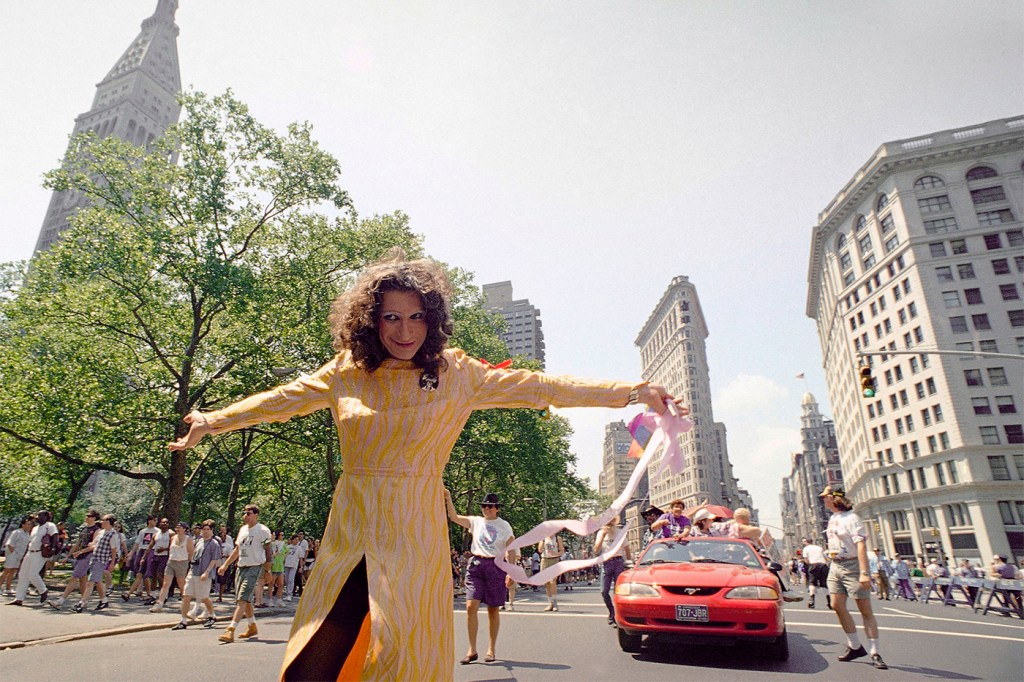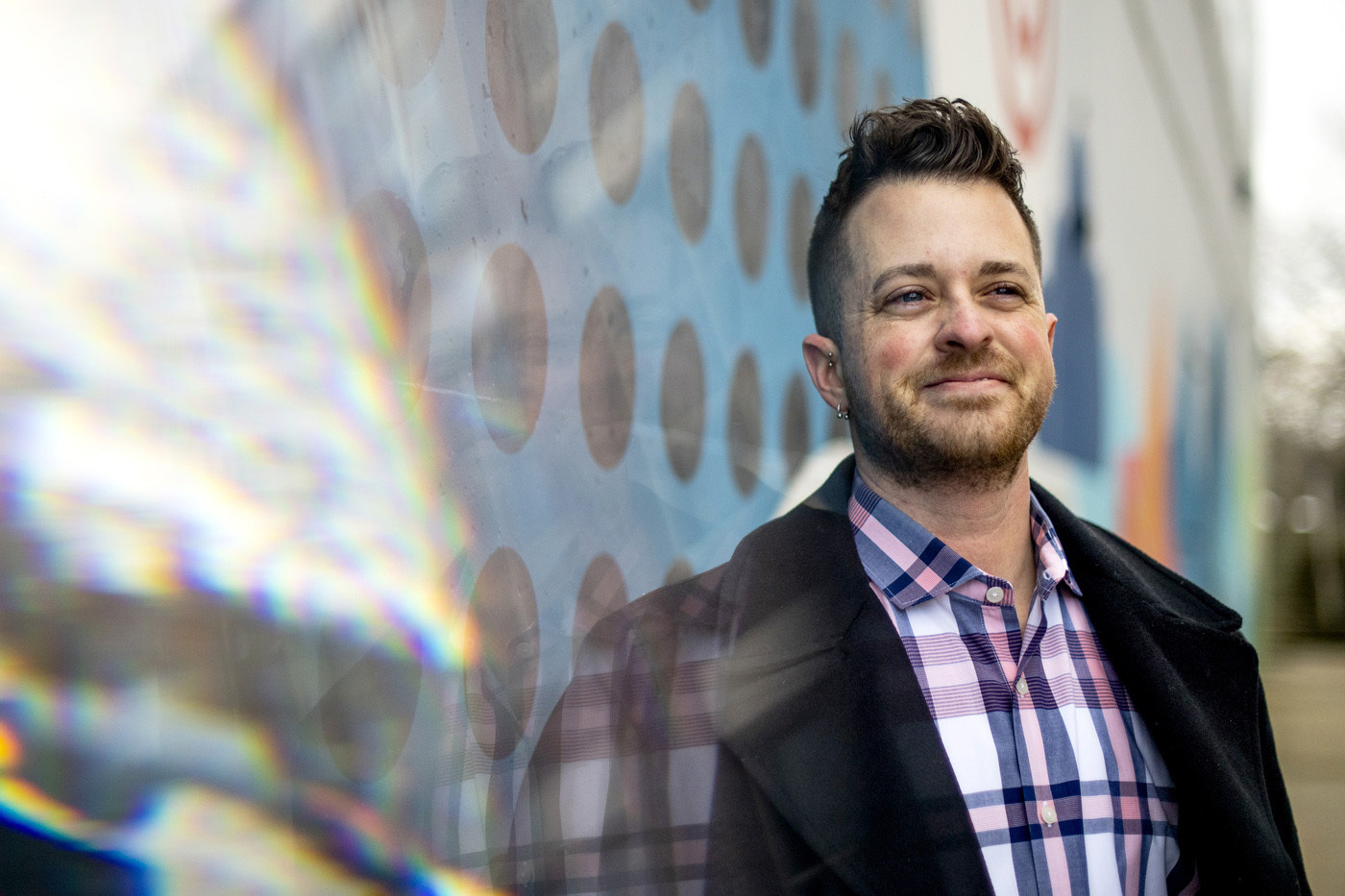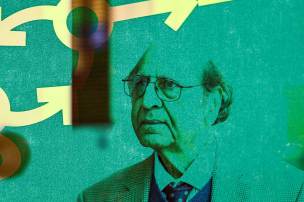Published on
Inside look at the lives of two transgender icons in a new Northeastern digital collection
The Digital Transgender Archive, housed and supported by Northeastern University, has made public a new collection of digitized materials on the iconic transgender activists Marsha P. Johnson and Sylvia Rivera.

Marsha P. Johnson and Sylvia Rivera—transgender women of color—are arguably the most famous participants of the Stonewall Uprising, the 1969 New York City protests that kicked off the modern LGBTQ+ rights movement.
Those who know of them, however, usually have little knowledge about their lives outside of their activism work.
This is why the Digital Transgender Archive, housed and supported by Northeastern University, recently made public a new collection of digitized materials on these iconic champions for social change.

“We have always wanted to have a collection on Marsha and Sylvia because they are such important figures in trans history,” says K.J. Rawson, a Northeastern associate professor of English and women’s, gender and sexuality studies, and founder and director of the Digital Transgender Archive.
“These kinds of materials are really valuable, especially to trans folks and younger people who are exploring their gender identity, to be able to really connect with some important figures in history,” Rawson says.
Researchers also want to know more about their lives, Rawson says, as there is not much information out there about Johnson or Rivera beyond the well-known stories.
The two activists became part of history when they joined the front lines of the Stonewall Uprising in 1969. The spontaneous rebellion began on June 28 after police raided the Stonewall Inn, a popular gay bar on Christopher Street in New York City, and began brutally arresting patrons.
Both Johnson and Rivera participated in the uprising, which lasted six days.
After the Stonewall Uprising, the two friends joined multiple gay liberation groups and co-founded Street Transvestite Action Revolutionaries, or STAR, to provide shelter and support to young trans people living on the streets. Johnson and Rivera also participated in a never-seen-before event—the first Christopher Street Gay Liberation Day march, which commemorated the anniversary of the Stonewall rebellion on June 28, 1970.
The events at the Stonewall set in motion the modern LGBTQ+ movement and are commemorated every year in June during the Pride Month, which celebrates the LGBTQ+ community, its activism and achievements in the fight for civil rights.
As transgender women, however, Johnson and Rivera continued to face discrimination from gay rights organizations predominantly led by white cisgender men, whose male gender identity was aligned with the sex they were assigned at birth and who often rejected the role of transgender people in Stonewall.
The Marsha P. Johnson and Sylvia Rivera collection in the Digital Transgender Archive includes a lot of photographs, personal correspondence, audio recordings and transcripts of interviews about Johnson and Rivera, clippings of news articles and magazine covers, and materials from memorial services.
The bulk of the materials, especially about Johnson, became available to the archive through the LGBT Community Center, or The Center, in New York City. This never-seen ephemera was recently donated by Randolfe “Randy” Wicker, a close friend of Johnson who lived with her in his Hoboken apartment for a decade until Johnson’s death in 1992.
A lot of photographs depict domestic scenes, Rawson says, birthday parties, holidays—and a lot of washing dishes.
“Being able to get a closer look at some of her [Johnson’s] everyday activities has just been so personally meaningful,” he says.
Although Johnson and Rivera had difficult lives, the collections are uplifting, says Brandon Craig, a fourth-year Ph.D. student in the criminology department and a research assistant at the Digital Transgender Archive.
“There’s a lot of joy in there,” he says. “They had to be scrappy and make this joy out of anything, so to say, but it’s cool to see that there are so many celebrations, parties and get-togethers.”
One photograph that stood out to him depicts Johnson smiling as she boards a Carnival Cruise ship.
“It sort of makes you happy to see her living her best life,” Craig says. “We joke in the lab that the stories of this friend group with Marsha and Sylvia would make a great HBO show.”
Sofia Arona, a 2023 Northeastern graduate who had a co-op and then continued working at the Digital Transgender Archive, agrees that joy is the main element of this ephemera. Many viewers, she says, are surprised to see that.
Being able to see trans people flourishing and experiencing joy is just such a gift, especially in moments when it can seem quite hard.
K.J. Rawson, a Northeastern associate professor of English and women’s, gender and sexuality studies, and founder and director of the Digital Transgender Archive
Johnson met preteen Rivera on the streets in 1963 and took her under her wing. They both experienced homelessness at times and had to do sex work or panhandle to provide for themselves.
However, these were material struggles, Arona says, that the two friends didn’t let define them. The “P” in Johnson’s name stood for her motto, “Pay It No Mind.”
“She [Johnson] was surrounded by a lot of people that loved her a lot,” she says.
Johnson was a generous, community-oriented person, Craig says, always concerned about other people. For example, she became a caretaker for Wicker’s partner, David Combs, who was battling AIDS.
“[It] definitely seems like they were a cohesive family unit, essentially, a chosen family,” Craig says.
Arona points out that the collections showcase a lot of beautiful and creative outfits that Johnson and Rivera wore.
“She [Johnson] would buy everything from a thrift store and had the ability of turning anything into an outfit that looked like that was bought on Fifth Avenue and the biggest and most expensive stores,” she says.
Sometimes these outfits helped Arona and Craig situate a photo or find names for unknown persons. They would match outfits in different pictures and find a timestamp or a name written on the back of the photo.
“With identifying people, there has been a lot of detective work,” Arona says. “And it’s a lot of memory work, which is why it’s important to have continuity [in the DTA’s personnel].”
A lot of times they had to search online for images of exteriors and interiors of New York City bars and piece visual elements together to figure out the location or an occasion pictured in a photo.
Another tricky part of processing the materials for the archive, Arona says, was making decisions about language in descriptions or text-based items. Some words that were commonly used are considered inappropriate by modern audiences.
“Do you add content warnings for them?” Arona says. “What we tend to land on is, it has to be the context. The historical time has to be taken into consideration.”
Some people might get offended, she says, when the term “drag queen” is used to describe a trans woman like Johnson or Rivera. But the Digital Transgender Archive prefers to focus on how they described themselves in their own words rather than the modern way of looking at people and their identities.
Arona believes that Johnson identified in a more trans feminine way, but she also used terms like “drag queen,” “transvestite” and “gay,” referring to herself. She also often signed off her correspondence as Malcolm instead of Marsha.
A lot of materials show, Arona says, that Rivera went through periods when she did not identify with either a male or female gender.
She might have been non-binary, but modern words cannot be used retroactively, says Micah Farman, a Northeastern alumni who worked at the Digital Transgender Archive before relocating to New York City and helping The Center sort through the Wicker collection.
“The queer community is still trying to find the right words to describe ourselves,” he says. “We’ve always been trying to do that. The words are never right.”
He says the Digital Transgender Archive collections show that there is no one way to be a transgender person.
“And I think that these two figures in particular really fought for that to be the case,” Farman says.
The Marsha P. Johnson and Sylvia Rivera collections are a part of the “Y’all Better Quiet Down!” Trans BIPOC Digitization Initiative within the Digital Transgender Archive. Rawson secured funding for the initiative through the Council on Library and Information Resources, which awarded him a Digitizing Hidden Collections: Amplifying Unheard Voices Grant in 2022.
“What we have up right now, it’s just a small fraction of what’s going to be there,” Rawson says, as some items are waiting to be processed and published.
He says the Digital Transgender Archive also brings this history to bear on the present. The archive helps to disprove false claims of politicians who are pushing for the anti-trans legislation by arguing that transgender people are a rare or new occurrence or a fad.
“One of the scholars who I most appreciate talks about trans archives as resources for resilience,” Rawson says. “And I think that being able to see trans people flourishing, and experiencing joy is just such a gift, especially in moments when it can seem quite hard.”
Alena Kuzub is a Northeastern Global News reporter. Email her at a.kuzub@northeastern.edu. Follow her on Twitter @AlenaKuzub.





